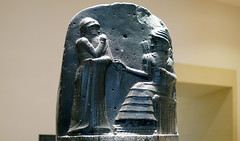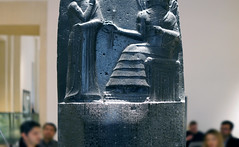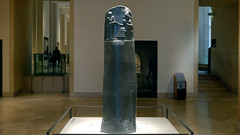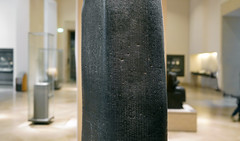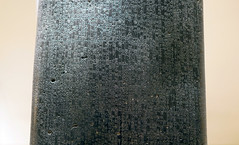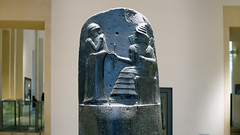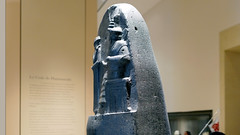7.4.4: Law Code Stele of King Hammurabi
- Page ID
- 163307
Law is at the heart of modern civilization, and is often based on principles listed here nearly 4,000 years ago.
A stele is a vertical stone monument or marker often inscribed with text or with relief carving.
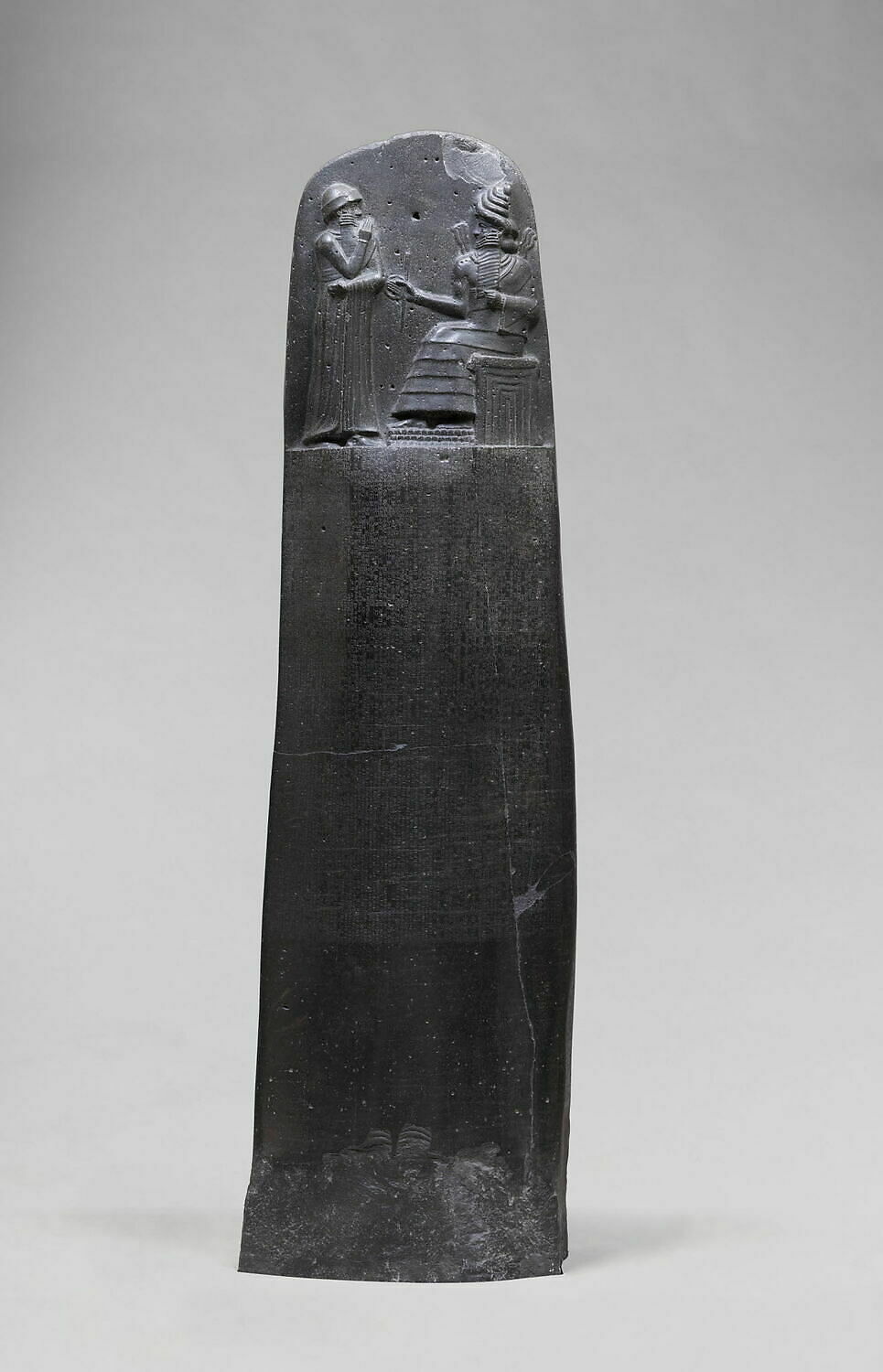
Figure \(\PageIndex{1}\): Law Code Stele of King Hammurabi, basalt, Babylonian, 1792–50 B.C.E. (Musée du Louvre, Paris)
Hammurabi of the city state of Babylon conquered much of northern and western Mesopotamia and by 1776 B.C.E., he is the most far-reaching leader of Mesopotamian history, describing himself as “the king who made the four quarters of the earth obedient.” Documents show Hammurabi was a classic micro-manager, concerned with all aspects of his rule, and this is seen in his famous legal code, which survives in partial copies on this stele in the Louvre and on clay tablets (a stele is a vertical stone monument or marker often inscribed with text or with relief carving). We can also view this as a monument presenting Hammurabi as an exemplary king of justice.
What is interesting about the representation of Hammurabi on the legal code stele is that he is seen as receiving the laws from the god Shamash, who is seated, complete with thunderbolts coming from his shoulders. The emphasis here is Hammurabi’s role as pious theocrat, and that the laws themselves come from the god.



